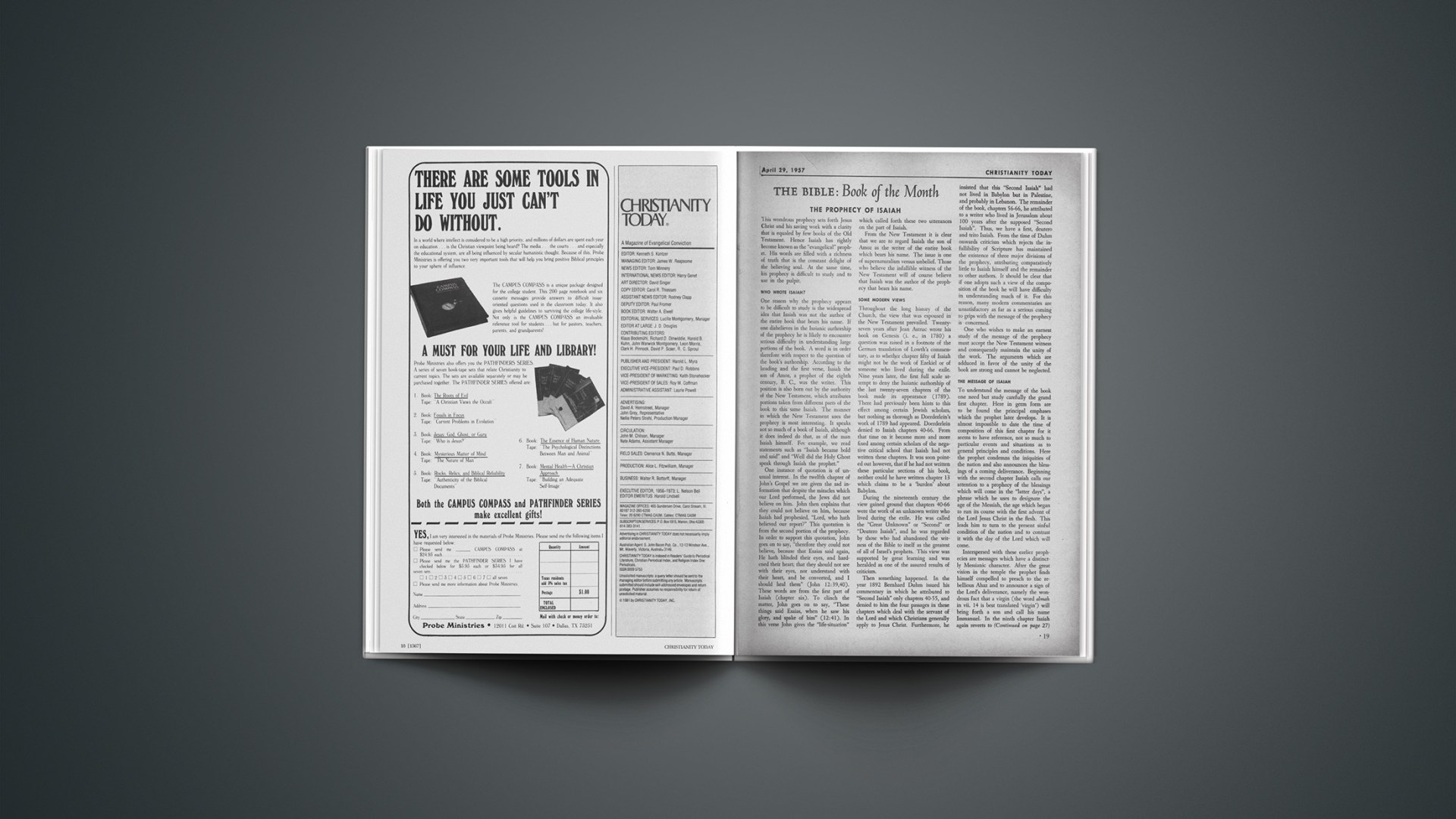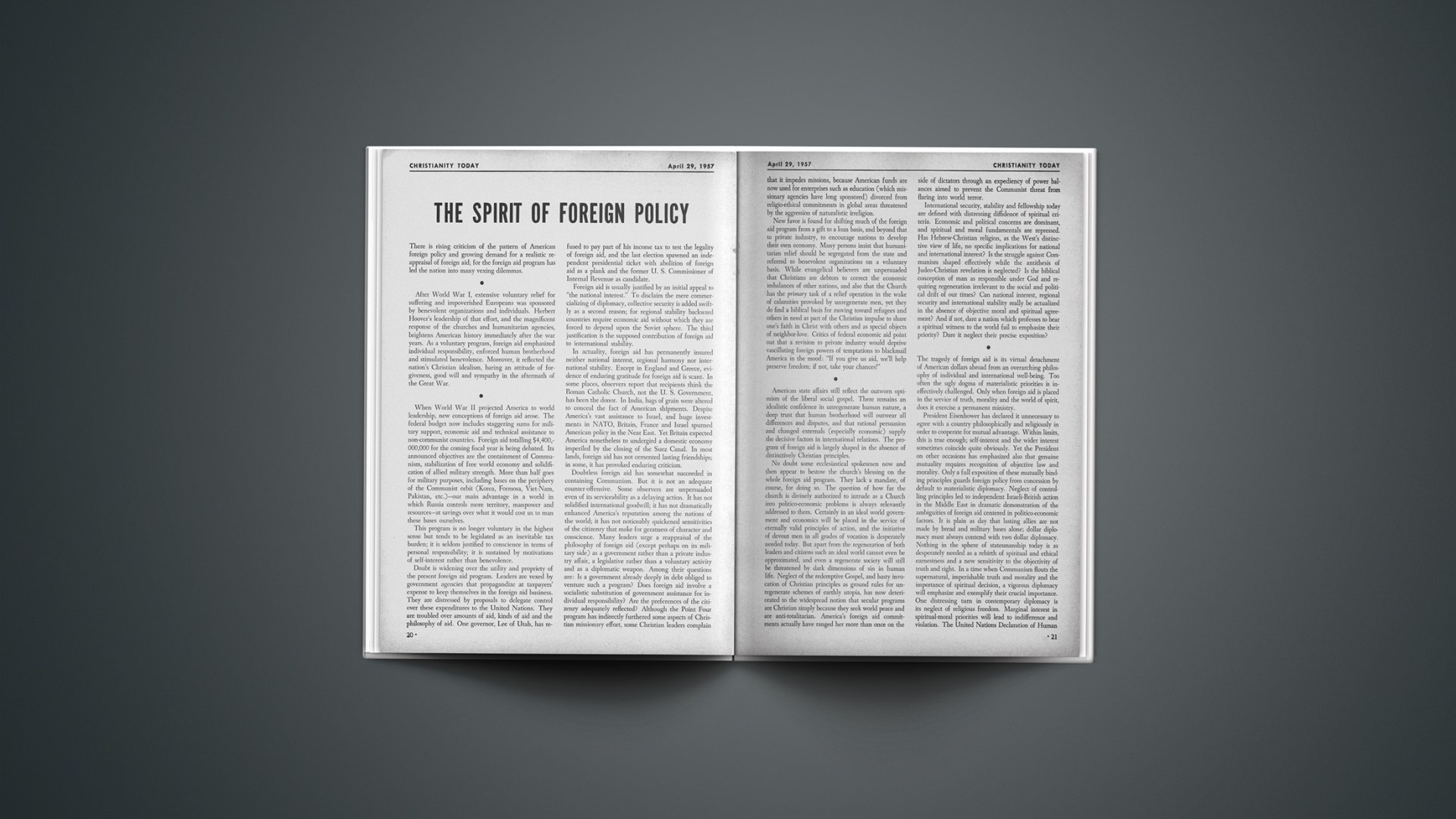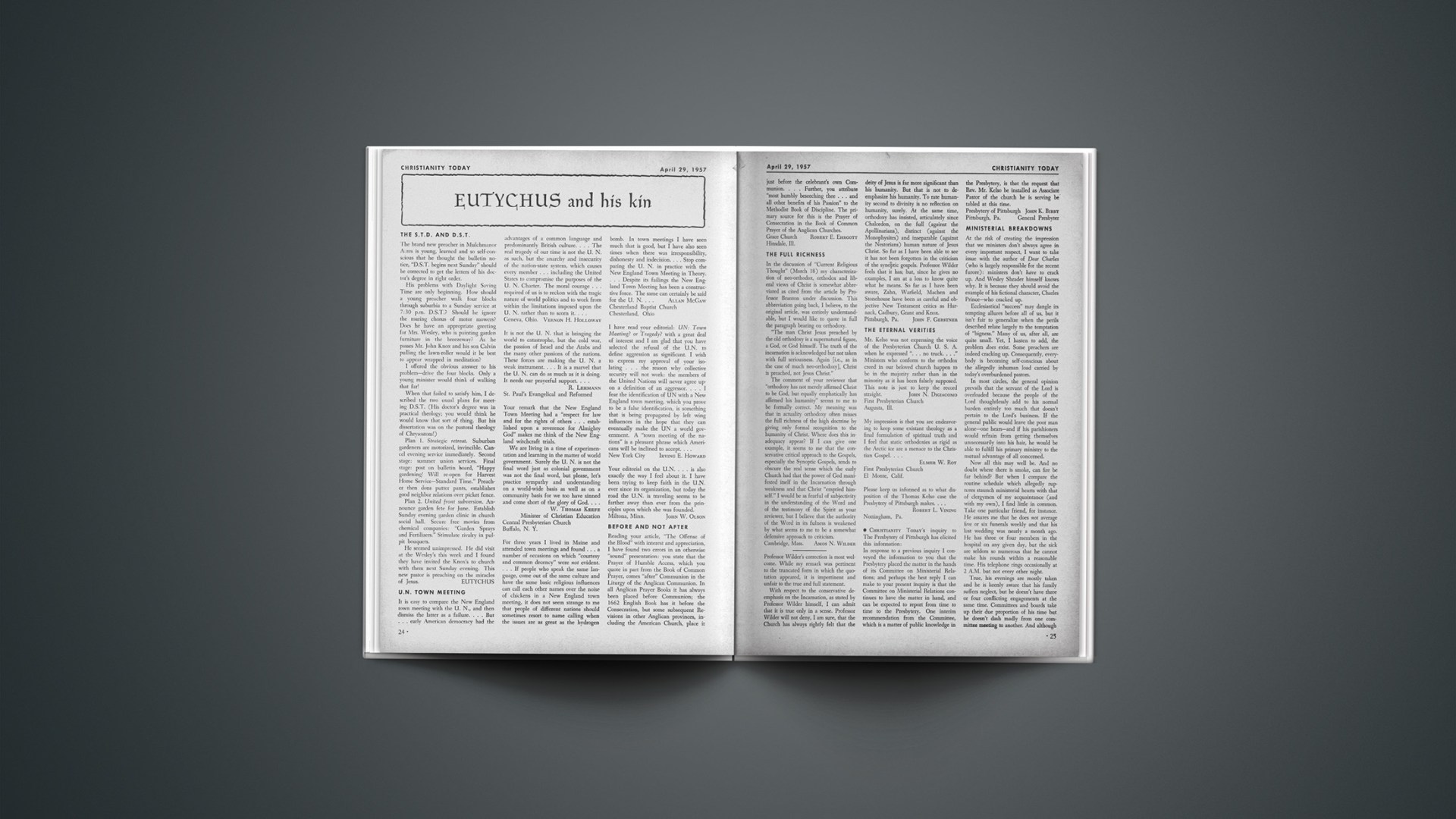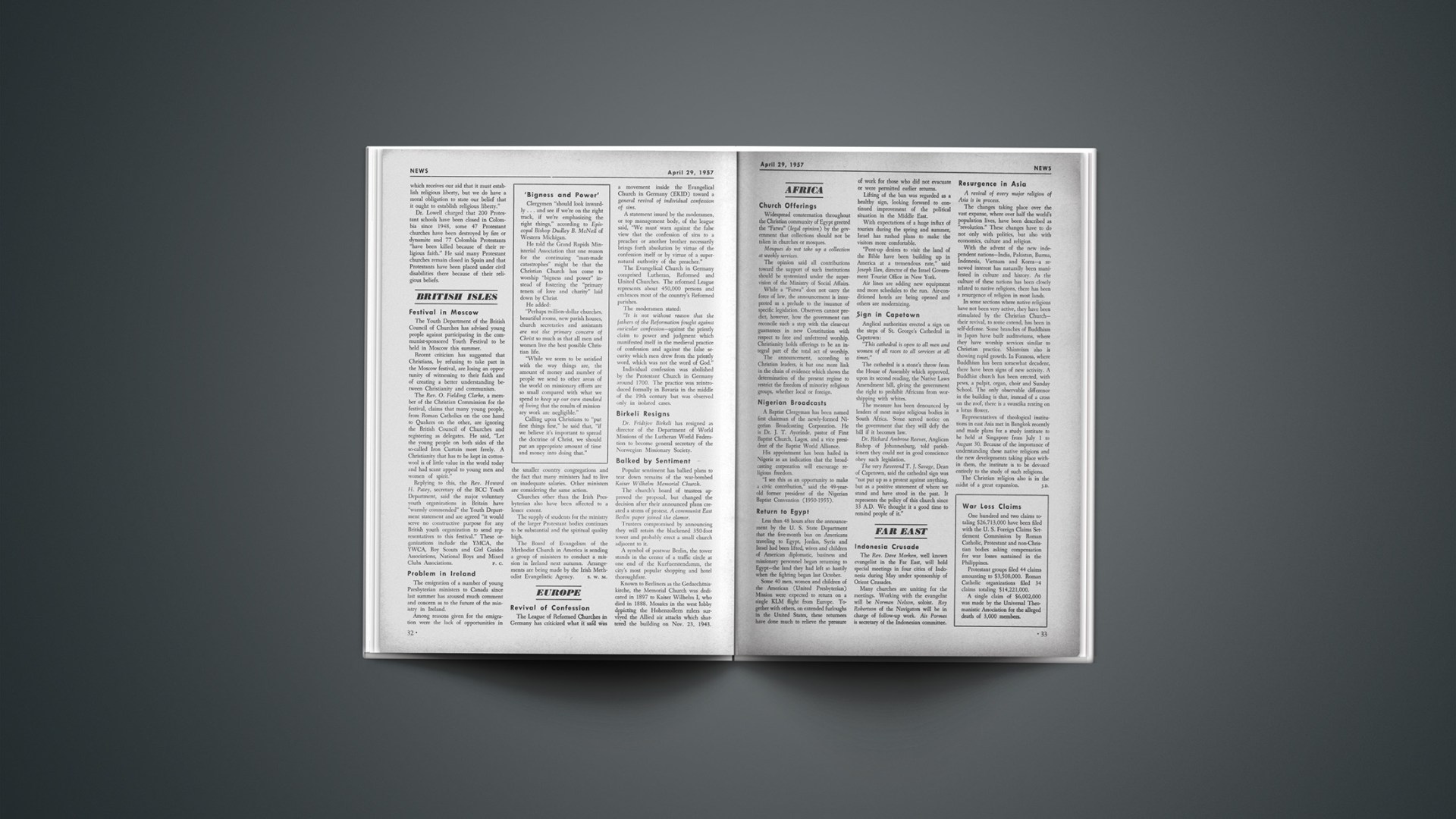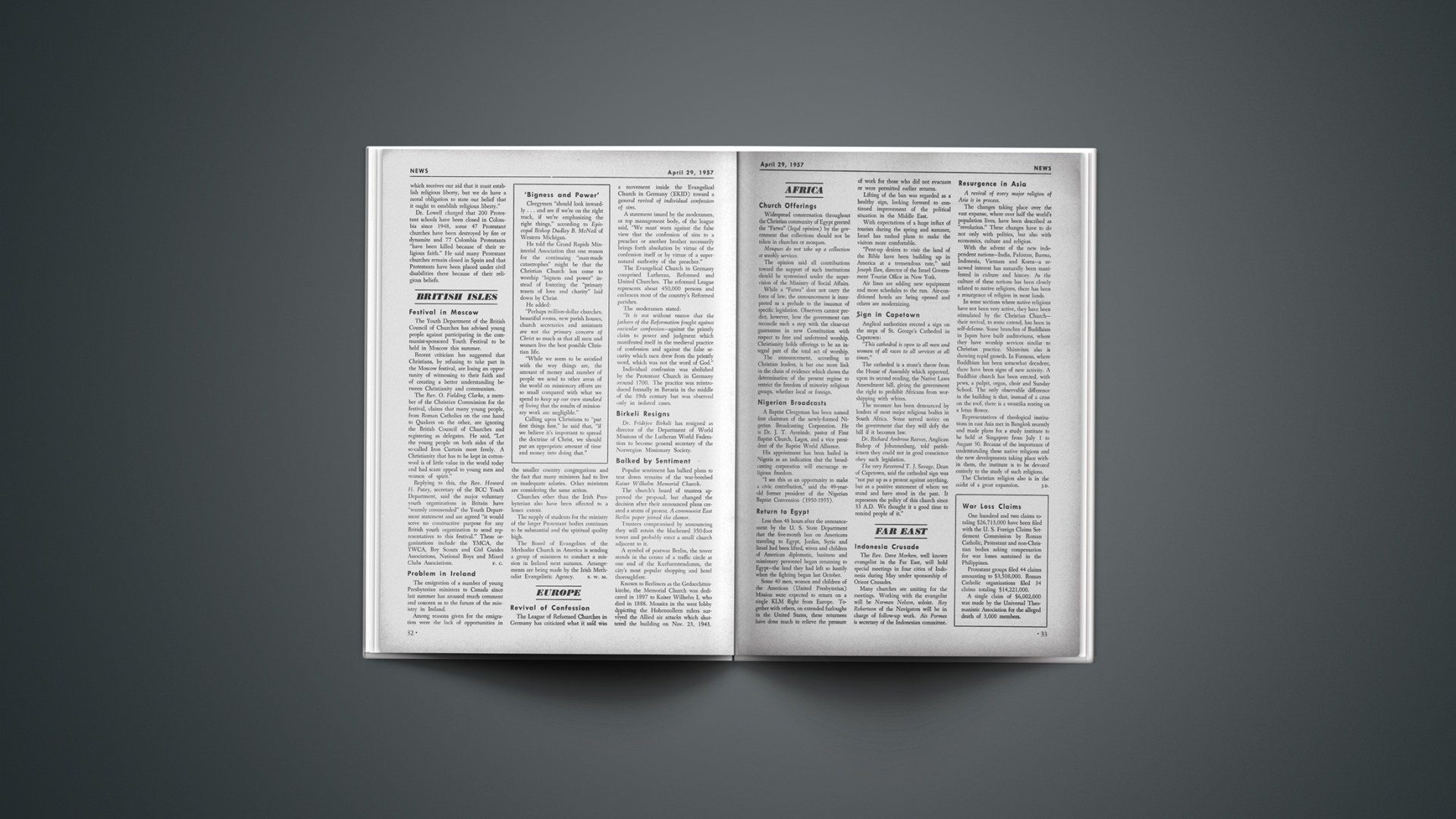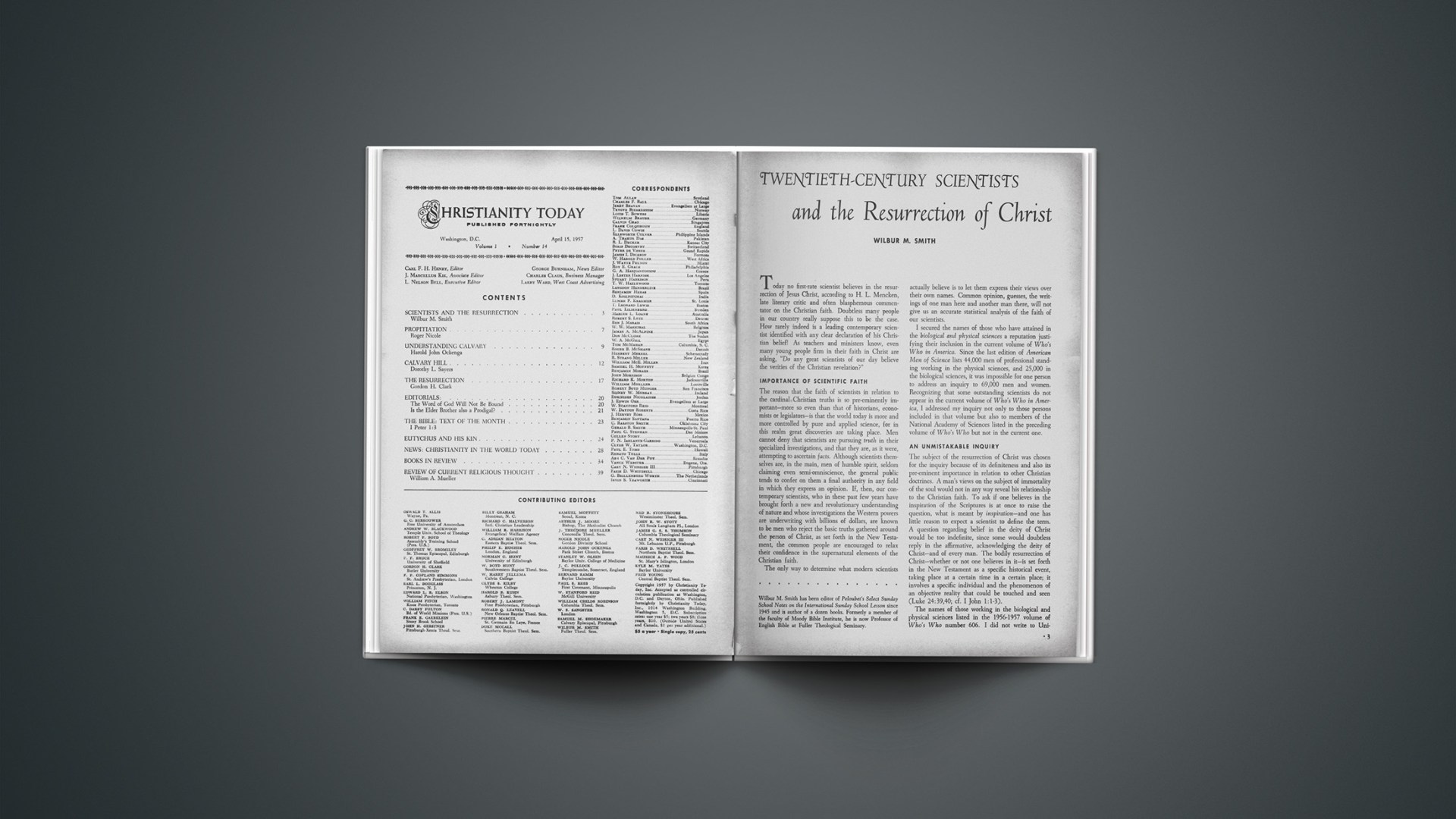This wondrous prophecy sets forth Jesus Christ and his saving work with a clarity that is equaled by few books of the Old Testament. Hence Isaiah has rightly become known as the “evangelical” prophet. His words are filled with a richness of truth that is the constant delight of the believing soul. At the same time, his prophecy is difficult to study and to use in the pulpit.
Who Wrote Isaiah?
One reason why the prophecy appears to be difficult to study is the widespread idea that Isaiah was not the author of the entire book that bears his name. If one disbelieves in the Isaianic authorship of the prophecy he is likely to encounter serious difficulty in understanding large portions of the book. A word is in order therefore with respect to the question of the book’s authorship. According to the heading and the first verse, Isaiah the son of Amoz, a prophet of the eighth century, B. C., was the writer. This position is also born out by the authority of the New Testament, which attributes portions taken from different parts of the book to this same Isaiah. The manner in which the New Testament uses the prophecy is most interesting. It speaks not so much of a book of Isaiah, although it does indeed do that, as of the man Isaiah himself. For example, we read statements such as “Isaiah became bold and said” and “Well did the Holy Ghost speak through Isaiah the prophet.”
One instance of quotation is of unusual interest. In the twelfth chapter of John’s Gospel we are given the sad information that despite the miracles which our Lord performed, the Jews did not believe on him. John then explains that they could not believe on him, because Isaiah had prophesied, “Lord, who hath believed our report?” This quotation is from the second portion of the prophecy. In order to support this quotation, John goes on to say, “therefore they could not believe, because that Esaias said again, He hath blinded their eyes, and hardened their heart; that they should not see with their eyes, nor understand with their heart, and be converted, and I should heal them” (John 12:39, 40). These words are from the first part of Isaiah (chapter six). To clinch the matter, John goes on to say, “These things said Esaias, when he saw his glory, and spake of him” (12:41). In this verse John gives the “life-situation” which called forth these two utterances on the part of Isaiah.
From the New Testament it is clear that we are to regard Isaiah the son of Amoz as the writer of the entire book which bears his name. The issue is one of supernaturalism versus unbelief. Those who believe the infallible witness of the New Testament will of course believe that Isaiah was the author of the prophecy that bears his name.
Some Modern Views
Throughout the long history of the Church, the view that was espoused in the New Testament prevailed. Twenty-seven years after Jean Astruc wrote his book on Genesis (i. e., in 1780) a question was raised in a footnote of the German translation of Lowth’s commentary, as to whether chapter fifty of Isaiah might not be the work of Ezekiel or of someone who lived during the exile. Nine years later, the first full scale attempt to deny the Isaianic authorship of the last twenty-seven chapters of the book made its appearance (1789). There had previously been hints to this effect among certain Jewish scholars, but nothing as thorough as Doerderlein’s work of 1789 had appeared. Doerderlein denied to Isaiah chapters 40–66. From that time on it became more and more fixed among certain scholars of the negative critical school that Isaiah had not written these chapters. It was soon pointed out however, that if he had not written these particular sections of his book, neither could he have written chapter 13 which claims to be a ‘burden’ about Babylon.
During the nineteenth century the view gained ground that chapters 40–66 were the work of an unknown writer who lived during the exile. He was called the “Great Unknown” or “Second” or “Deutero Isaiah”, and he was regarded by those who had abandoned the witness of the Bible to itself as the greatest of all of Israel’s prophets. This view was supported by great learning and was heralded as one of the assured results of criticism.
Then something happened. In the year 1892 Bernhard Duhm issued his commentary in which he attributed to “Second Isaiah” only chapters 40–55, and denied to him the four passages in these chapters which deal with the servant of the Lord and which Christians generally apply to Jesus Christ. Furthermore, he insisted that this “Second Isaiah” had not lived in Babylon but in Palestine, and probably in Lebanon. The remainder of the book, chapters 56–66, he attributed to a writer who lived in Jerusalem about 100 years after the supposed “Second Isaiah”. Thus, we have a first, deutero and trito Isaiah. From the time of Duhm onwards criticism which rejects the infallibility of Scripture has maintained the existence of three major divisions of the prophecy, attributing comparatively little to Isaiah himself and the remainder to other authors. It should be clear that if one adopts such a view of the composition of the book he will have difficulty in understanding much of it. For this reason, many modern commentaries are unsatisfactory as far as a serious coming to grips with the message of the prophecy is concerned.
One who wishes to make an earnest study of the message of the prophecy must accept the New Testament witness and consequently maintain the unity of the work. The arguments which are adduced in favor of the unity of the book are strong and cannot be neglected.
The Message Of Isaiah
To understand the message of the book one need but study carefully the grand first chapter. Here in germ form are to be found the principal emphases which the prophet later develops. It is almost impossible to date the time of composition of this first chapter for it seems to have reference, not so much to particular events and situations as to general principles and conditions. Here the prophet condemns the iniquities of the nation and also announces the blessings of a coming deliverance. Beginning with the second chapter Isaiah calls our attention to a prophecy of the blessings which will come in the “latter days”, a phrase which he uses to designate the age of the Messiah, the age which began to run its course with the first advent of the Lord Jesus Christ in the flesh. This leads him to turn to the present sinful condition of the nation and to contrast it with the day of the Lord which will come.
Interspersed with these earlier prophecies are messages which have a distinctly Messianic character. After the great vision in the temple the prophet finds himself compelled to preach to the rebellious Ahaz and to announce a sign of the Lord’s deliverance, namely the wondrous fact that a virgin (the word almah in vii. 14 is best translated ‘virgin’) will bring forth a son and call his name Immanuel. In the ninth chapter Isaiah again reverts to this son and proclaims his wondrous name, “Wonderful Counsellor, Mighty God, Everlasting Father, Prince of Peace.” The little core of Messianic prophecies found in chapters seven through twelve form as it were a foundation upon which the prophet can now build.
It will be clear from the passages themselves that these prophecies were uttered during the reigns of kings who lived in the eighth century, B. C. Beginning with the thirteenth chapter, however, Isaiah takes us away beyond his own day to look forward to the time when Babylon will be a mighty power. It is in the Spirit of God that he can thus look forward. He then returns again to the Assyrian period, i. e., the eighth century, and speaks much about the injustices of his own day. He does not stay in this century however, but casts his glance far beyond his own day to give what approaches an apocalyptic picture of world powers and a wondrous vision of peace (chapter 35).
Chapters 36–39 form an historical bridge by means of which Isaiah takes us from the Assyrian period to that of the Babylonians. These are fascinating chapters, but they close on a note of unrest and sorrow. Read carefully chapter 39, and note how tragic is the condition into which Hezekiah and the people of God have come. This is not the end, however, for chapter 39 prepares the way for chapter 40. The mighty “Comfort ye” of chapter 40 cannot rightly be understood apart from the background of gloom with which chapter 39 closes. If ever two chapters belonged together, these are the two.
At the same time when we read chapter forty and those that follow we do notice quite a difference from the earlier portion of the book. How is this difference to be explained? Must it be explained upon the hypothesis that a new author is at work here? That is the position of the negative critical school, but it is a position which is contradicted by the New Testament. May we not account for these chapters in the following manner? Isaiah, after the conclusion of his vigorous ministry under Hezekiah, more or less retired from the scene of active prophesying and devoted himself to reflection upon the future course of the people of God. He saw them by revelation of the Spirit of God under the bondage of Babylon. From this bondage they were to be set free by means of Cyrus of Persia, whom the Lord would raise up to be his anointed.
There was however a greater bondage than that of Babylon. It was the bondage and servitude of sin. From this servitude there could be but one deliverance, and that was to be accomplished, not by Cyrus nor by any other mere human agent, but only by the righteous servant of the Lord. The last chapters of the prophecy, therefore, have to do with the vicissitudes which will come upon the people of God. They are somewhat desultory in character, but throughout them all there runs the wondrous fact that there will be a salvation, a deliverance which is spiritual in nature and which will be wrought, not by man, but by God.
The Servant Of The Lord
Who then is this servant of the Lord? There are many answers to this question. Under the influence of modern Scandinavian studies, we are being told that the figure of the servant is a complex one, the roots of which go back into ancient mythology and to the ideas of kingship and “corporate personality” which were held in ancient Israel. The discussion of the problem is one which constantly engages the pens of scholars. Despite all the views which have been advanced, however, we believe that the servant is none other than the Saviour, Jesus the Christ.
We believe, that Jesus not merely found a correspondence between the figure of the servant and certain events in his own life and death, but rather that Isaiah actually predicted the death and sufferings of Jesus. Here the issue of supernaturalism meets us head-on. Isaiah himself may have written far more deeply than he realized, but the Spirit of God, the final author of Scripture, revealed to Isaiah in the strange words about the servant the death of the one who should deliver mankind from the guilt and bondage of sin. Isaiah prophesied of Jesus Christ.
Helps In The Study Of The Book
How can one best approach a study of this remarkable prophecy? The material which is written on the prophecy is so vast that it is impossible to keep up with it all, nor is it all worth reading. There are, however, certain books which are so important that no clergyman who wishes to preach from this prophecy should be without them. We shall merely attempt to list some of the most valuable works. In the first place, an excellent introduction to the study of the prophecy will be found in the little book of Oswald T. Allis, The Unity of Isaiah. The chapter on the nature of biblical prophecy should be studied by all who wish a sane discussion of this question. The biblical view of prophecy is cogently contrasted with the negative critical view. The question of the authorship of the work is capably handled, and particular attention is devoted to the importance of the Cyrus prophecy. We can think of no better approach to the prophecy than the study of this little book. A useful little work on Isaiah which may also be mentioned is by George L. Robinson, The Book of Isaiah.
There are many commentaries, but probably the best is that of Joseph Addison Alexander, which has recently been reprinted. This work is first of all true to the Scriptures, and it is also thoroughly scholarly. It breathes the air of genuine piety. The introduction is excellent and so are the comments. The man who uses it will have to consult his Hebrew, but it will enable him to obtain a greater grasp of that language. As a companion the reader will find the commentary of Franz Delitzsch of great help. When Delitzsch is at his best he cannot be surpassed. There are some remarkable insights in this work.
There are of course many other works, but the one who wishes to make a serious study of the prophecy cannot do better than to use those which we have mentioned. The study of Isaiah will not be easy. It will require much application and thought, but it will certainly be rewarding. It will bring one ever closer to the redeemer of whom it speaks, the child whose name is Wonderful, who was wounded for our transgressions and bruised for our iniquities.

